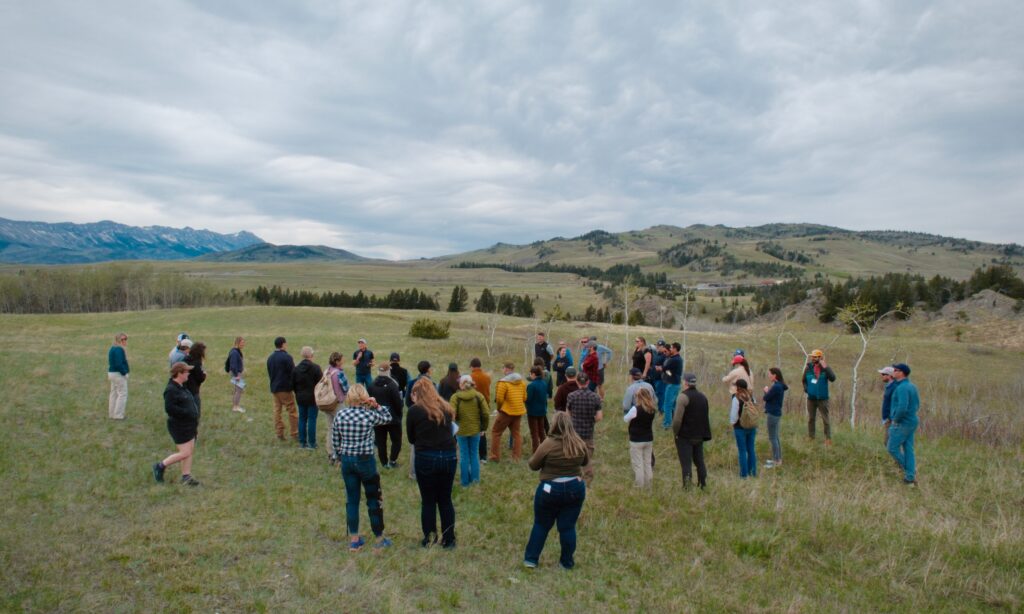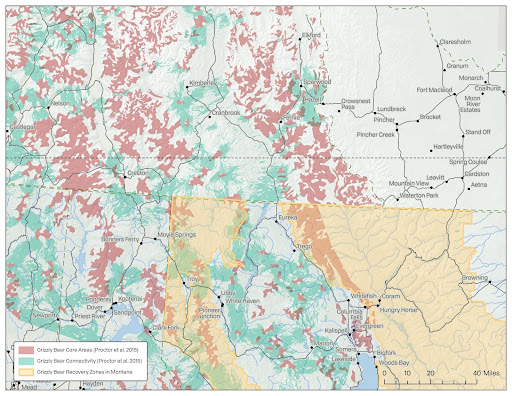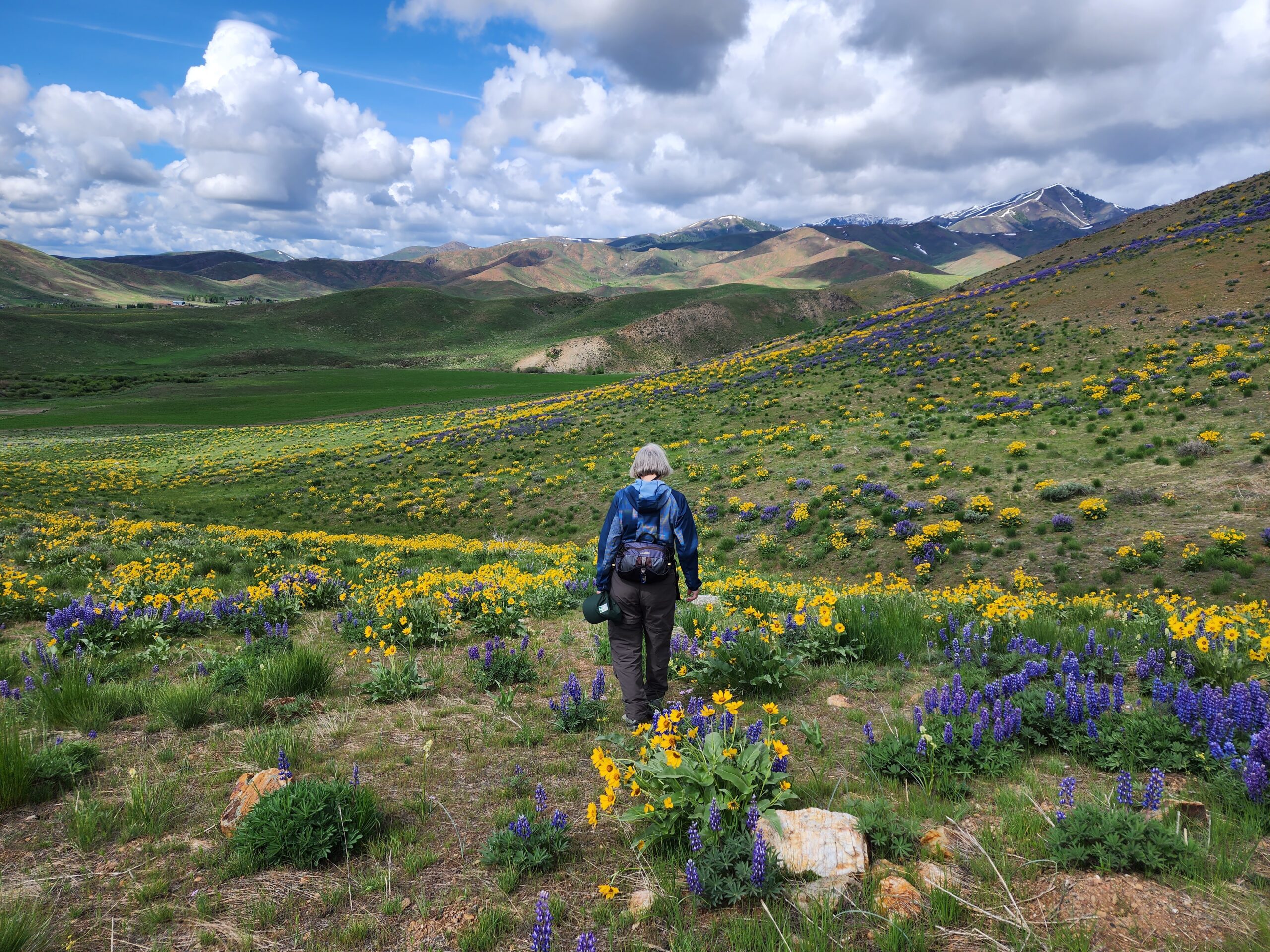By Amy Katz, Conservation & GIS Manager
For three days in early May, Heart of the Rockies Initiative gathered our land trust members in Fernie, British Columbia for our spring member meeting. Home to our newest land trust member, Elk Valley Regional Land Trust, Fernie is a quaint mountain town framed by the picturesque Lizard Mountain Range. Here, we enjoyed gathering with both old and new faces and learning about the great work of our Canadian partners.
On the second afternoon of our meeting, we all climbed aboard a tour bus and headed east from Fernie on Highway 3. We traveled over the scenic Crowsnest Pass into Alberta through the Castle Mountains, passing through the towns of Hosmer, Sparwood, Crowsnest, Coleman, and Bellevue. Along the way, we stopped to explore projects from four of our land trust partners — Nature Conservancy of Canada – Alberta, Nature Conservancy of Canada – British Columbia, Southern Alberta Land Trust Society, and Nature Trust of British Columbia — each representing a unique story and, together, reflecting the truly collaborative, strategic conservation effort underway across the pass.

The wildflowers were just beginning to bloom, and the weather held for a beautiful, moody day in the field. We didn’t see any grizzly bears, but I thought about them a lot that day.The southern Canadian Rockies that span the northern reaches of the Heart of the Rockies Initiative service area are key to transboundary connectivity efforts. Michael Proctor, the leading grizzly bear biologist for the Canadian Rockies, estimated a combined population of 150 bears in the transboundary Cabinet-Yaak and Selkirk grizzly bear recovery zones and has modeled connectivity and core habitat that spans southern Alberta and British Columbia down through northern Idaho and Montana (Fig. 1, below; also see Proctor et al. 2007, 2012, 2018). Our Keep It Connected program has leaned heavily on Proctor’s research to inform our Canadian connectivity strategy, and many Canadian land trusts also use his maps and data to inform their conservation planning.

Figure 1. Michael Proctor’s modeled grizzly bear core areas (red) and connectivity (teal) across the Canadian / U.S. border. It is easy to see how movement in and out of Montana’s grizzly bear recovery zones is transboundary.
Earlier that morning, our group had heard from Justin Thompson, executive director of Southern Alberta Land Trust Society, and Jasper Lament, CEO of the Nature Trust of British Columbia, who cited Proctor’s work, noting four key wildlife corridors between Canada and the U.S., and emphasizing the importance of strategic private land conservation on an international scale. We also heard from Danah Duke, Executive Director of the Miistakis Institute, who set the scene for the field trip with her report on the wildlife crossing study and resulting projects underway on Crowsnest Pass, complementing the land protection work of the land trusts. Wildlife biologist Clayton Lamb from Biodiversity Pathways rounded out the morning session, sharing pictures and maps from his latest elk and mule deer connectivity research that again reinforced the importance of unimpeded animal movement in between the U.S. and Canada.
With the morning’s sessions fresh in my mind as I stood at Crowsnest Lake in the midst of the Jim Prentice Wildlife Corridor that afternoon, it was easy to envision bears, elk, moose, and deer moving through the forest reserve lands to the north of the highway down into Castle Provincial Park to the south, just as Miistakis had identified. Further over the pass into Alberta, we took a walk on another conservation property near Rock Creek, where efforts between multiple land trusts have resulted in an almost contiguous north-south wildlife corridor connecting provincial crown lands across Highway 3. Each of the projects we visited made clear how strategy and science are driving intentional conservation priorities along the pass.
I returned to Missoula energized and encouraged. Our Canadian land trust members have achieved something special on Crowsnest Pass, the sort of collaboration only possible through years of trust- and relationship-building, patience, and a deep appreciation for a shared ecosystem. It felt important to share their vision and success with our U.S. land trust members as a reminder that there is an even larger scale vision of collaboration that we as Heart of the Rockies Initiative and Keep It Connected support and foster.


